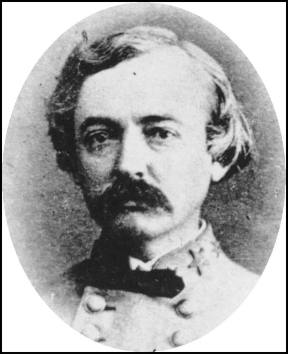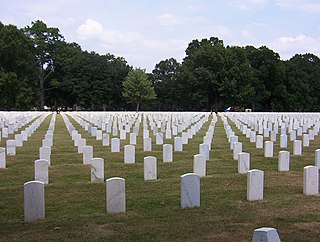The following is a tabulation of United States military casualties of war.

Albert Henry Woolson was the last known surviving member of the Union Army who served in the American Civil War; he was also the last surviving Civil War veteran on either side whose status is undisputed. At least three men who outlived Woolson claimed to be Confederate veterans, but one has been debunked and the other two are unverified. The last surviving Union soldier to see combat was James Hard (1843–1953).

William Selby Harney, otherwise known among the Lakota people as "Woman Killer" and "Mad Bear," was an American cavalry officer in the US Army, who became known during the Indian Wars and the Mexican–American War for his brutality and ruthlessness. One of four general officers in the US Army at the beginning of the American Civil War, he was removed from overseeing the Department of the West because of his Southern sympathies early in the war, although he kept Missouri from joining the Confederacy. Under President Andrew Johnson, he served on the Indian Peace Commission, negotiating several treaties before spending his retirement partly in St. Louis and partly trading reminiscences with Jefferson Davis and Ulysses S. Grant in Mississippi.
Stones River National Battlefield, a 570-acre (2.3 km2) park along the Stones River in Rutherford County, Tennessee, three miles (5 km) northwest of Murfreesboro and twenty-eight miles southeast of Nashville, memorializes the Battle of Stones River. This key battle of the American Civil War occurred on December 31, 1862 and January 2, 1863, and resulted in a strategic Union victory.
The Jefferson Barracks Military Post is located on the Mississippi River at Lemay, Missouri, south of St. Louis. It was an important and active U.S. Army installation from 1826 through 1946. It is the oldest operating U.S. military installation west of the Mississippi River, and it is now used as a base for the Army and Air National Guard. A Veterans Affairs healthcare system campus is located on the southern portion of the base and is also the headquarters for the Veterans Canteen Service.

William Henry Chase Whiting was a United States Army officer who resigned after 16 years of service in the Army Corps of Engineers to serve in the Confederate States Army during the American Civil War. He was wounded at the Second Battle of Fort Fisher by a musket ball to his leg, and died in prison camp on March 10, 1865, of dysentery.

Springfield National Cemetery is a United States National Cemetery located in the city of Springfield, in Greene County, Missouri. Administered by the United States Department of Veterans Affairs, it encompasses 18.1 acres (7.3 ha), and as of the end of 2005, had 14,685 interments.

Beaufort National Cemetery is a United States National Cemetery located in Beaufort County, in the city of Beaufort, South Carolina. Managed by the United States Department of Veterans Affairs, it encompasses 44.1 acres (17.8 ha), and as of 2024, had over 28,725 interments.

St. Augustine National Cemetery is a United States National Cemetery located in the city of St. Augustine in St. Johns County, Florida. Located on the grounds of the active military installation known as St. Francis Barracks, the state headquarters of the Florida National Guard, it encompasses 1.4 acres (0.57 ha), and as of the end of 2005 had 2,788 interments. Administered by the United States Department of Veterans Affairs, it is currently closed to new interments. It was listed on the National Register of Historic Places in 2016.

Memphis National Cemetery is a United States National Cemetery located in the Nutbush neighborhood in northeast Memphis, Tennessee. Administered by the United States Department of Veterans Affairs, it encompasses 44.2 acres (17.9 ha), and as of the end of 2007, had 42,184 interments.

Lloyd James Beall was a senior officer of the Confederate States Marine Corps who attained the rank of colonel and served as the Commandant of the Confederate States Marine Corps from May 23, 1861, to April 9, 1865.

Daniel Marsh Frost was a former United States Army officer who became a brigadier general in the Missouri Volunteer Militia (MVM) and the Confederate States Army during the American Civil War. Among the handful of Confederate generals born in the North, Frost led the MVM during the Camp Jackson affair in May 1861 that fanned civil unrest in St. Louis.

Samuel M. Whitside was a United States Cavalry officer who served from 1858 to 1902. He commanded at every level from company to department for 32 of his 43 years in service, including Army posts such a Camp Huachuca, Jefferson Barracks, and Fort Sam Houston, the Departments of Eastern Cuba and Santiago and Puerto Principe, Cuba, commanded a provisional cavalry brigade, a squadron in the 7th Cavalry Regiment, and a troop and platoon in the 6th Cavalry Regiment. The pinnacle of his career was serving as the commanding general of the Department of Eastern Cuba before retiring in June 1902 as a brigadier general in the U.S. Army.
Alexander Early Steen was a career American soldier from Missouri who served in the United States Army in the Mexican–American War. He rejoined the army in 1852 and served until he resigned to join the Confederate forces on May 10, 1861. He served as a general in the secessionist Missouri State Guard forces and as a colonel and acting brigadier general in the Confederate States Army during the American Civil War. He was killed in the Battle of Prairie Grove.

Hugh Stanley Miller was an American professional baseball first baseman. Miller played in Major League Baseball for the Philadelphia Phillies of the National League in 1911 and the St. Louis Terriers of the Federal League in 1914 and 1915. He batted and threw right-handed.

Richard Gentry was an American politician and military officer who died during the Seminole Wars. The Missouri county of Gentry is named for him. He was the first mayor and founder of Columbia, Missouri.
Confederate monuments and memorials in the United States include public displays and symbols of the Confederate States of America (CSA), Confederate leaders, or Confederate soldiers of the American Civil War. Many monuments and memorials have been or will be removed under great controversy. Part of the commemoration of the American Civil War, these symbols include monuments and statues, flags, holidays and other observances, and the names of schools, roads, parks, bridges, buildings, counties, cities, lakes, dams, military bases, and other public structures. In a December 2018 special report, Smithsonian Magazine stated, "over the past ten years, taxpayers have directed at least $40 million to Confederate monuments—statues, homes, parks, museums, libraries, and cemeteries—and to Confederate heritage organizations."
The 56th United States Colored Infantry was an infantry regiment that served in the Union Army during the American Civil War. The regiment was composed of African American enlisted men commanded by white officers and was authorized by the Bureau of Colored Troops which was created by the United States War Department on May 22, 1863. The regiment was originally organized as the 3rd Arkansas Volunteer Infantry (African Descent) on May 22, 1863.
The Civil War Trust's Civil War Discovery Trail is a heritage tourism program that links more than 600 U.S. Civil War sites in more than 30 states. The program is one of the White House Millennium Council's sixteen flagship National Millennium Trails. Sites on the trail include battlefields, museums, historic sites, forts and cemeteries.

Alexander H. Mitchell was a United States military officer who fought with the Union Army during the American Civil War as captain of Company A of the 105th Pennsylvania Infantry. Wounded multiple times in combat during the war, he was awarded the Kearny Cross for his distinguished service in the Battle of Chancellorsville, Virginia in May 1863, and was then also awarded his nation’s highest award for valor, the U.S. Medal of Honor for his capture of a Confederate flag in hand-to-hand combat with the color-bearer of the 18th North Carolina Infantry during the Battle of Spotsylvania Court House on May 12, 1864.




















